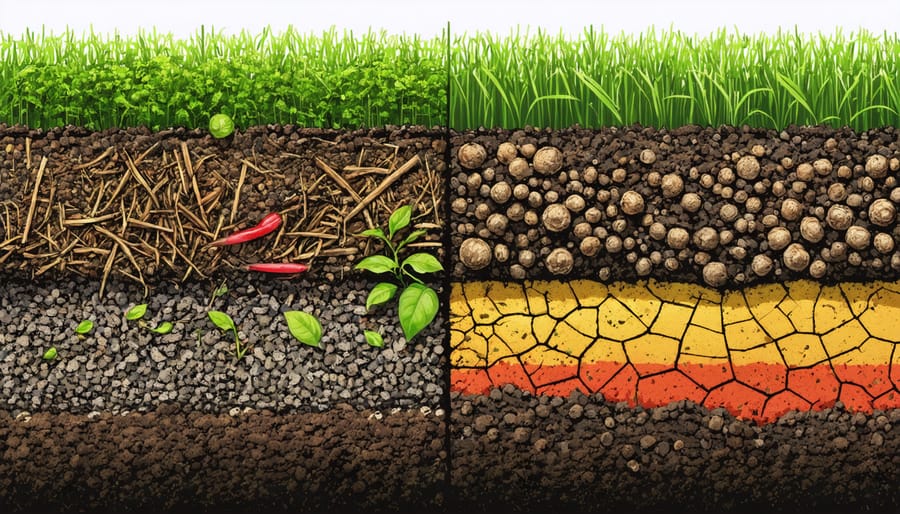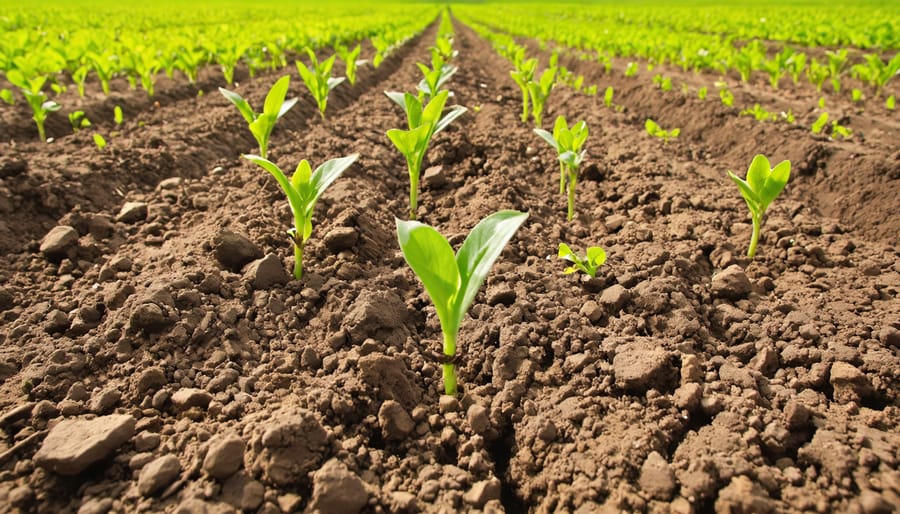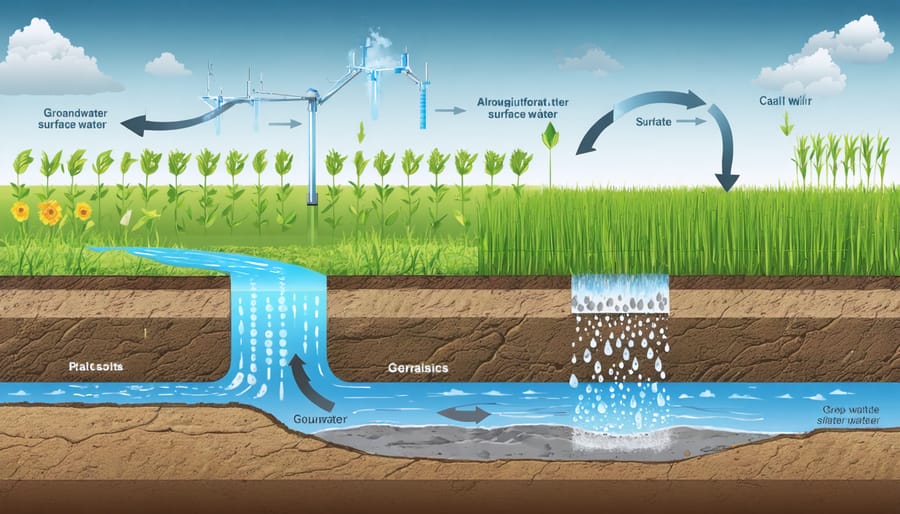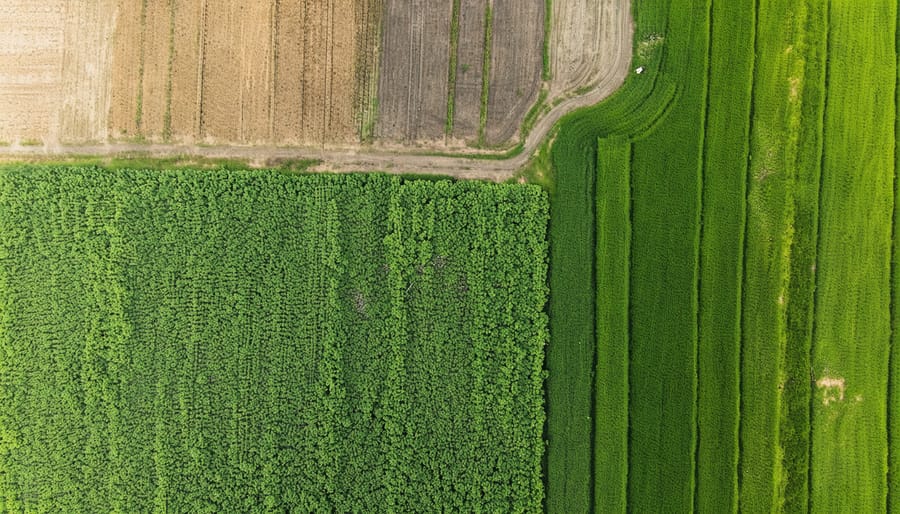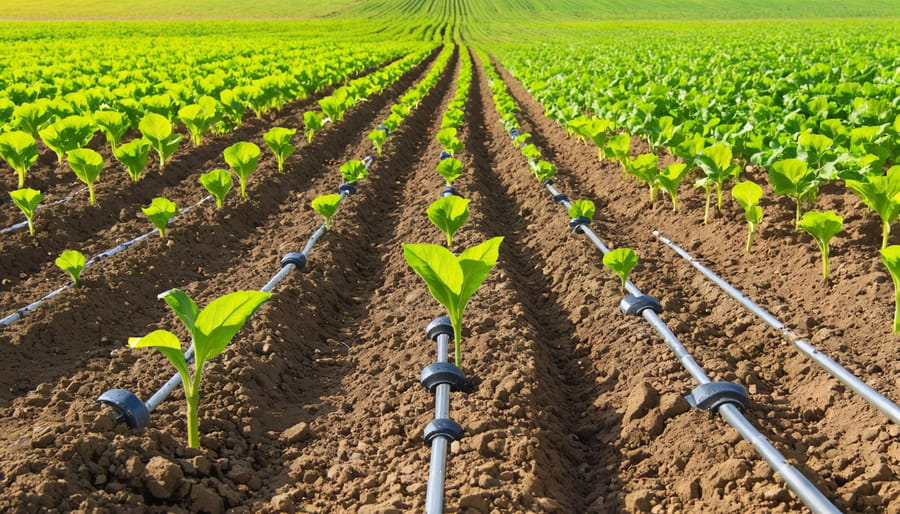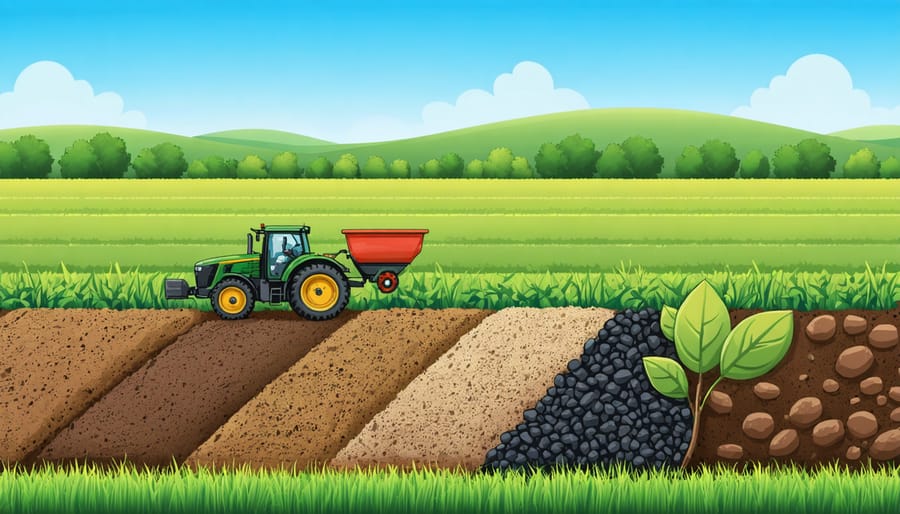While mulching remains a valuable practice for soil erosion prevention, Canadian farmers and agricultural professionals must carefully weigh its potential drawbacks. Recent studies across Alberta’s diverse growing regions reveal that improper mulching techniques can lead to significant crop yield reductions and soil health issues. From nutrient immobilization in Prairie soils to unexpected pest habitat creation, understanding these challenges helps producers make informed decisions about their mulching practices. The University of Alberta’s Agricultural Research Centre documented a 15% decrease in nitrogen availability when excessive wood-based mulch was applied to test plots, highlighting the critical need for balanced mulching approaches. As we examine five key disadvantages of mulching, we’ll explore practical solutions that help farmers maintain soil health while avoiding common pitfalls in their agricultural operations.
Nutrient Imbalance and Soil Chemistry
The Carbon-Nitrogen Problem
When incorporating woody mulch materials like bark or wood chips into your garden, you might encounter what’s known as nitrogen robbery. This occurs because the microorganisms breaking down these carbon-rich materials require significant amounts of nitrogen to function, temporarily competing with your plants for this essential nutrient. This process can significantly impact soil health and nutrient balance, particularly during the first few months after application.
For Alberta farmers, this issue is especially relevant during early growing seasons when crops need maximum nitrogen availability. Research from Prairie agricultural stations shows that woody mulches can temporarily reduce available nitrogen by up to 25% in the top soil layer. To mitigate this effect, consider supplementing with nitrogen-rich materials like composted manure or incorporating legume cover crops into your rotation schedule.
Remember that this nitrogen deficit is typically temporary, lasting 3-4 months as the mulch begins to decompose. Once stabilized, the mulch actually returns nitrogen to the soil, contributing to long-term fertility. Planning your mulch application timing and choosing the right materials can help minimize these short-term nutrient challenges.

pH Fluctuations
Different mulch materials can significantly impact your soil’s pH levels, a crucial factor for crop health and nutrient availability. Organic mulches like pine needles and oak leaves naturally decompose to create acidic conditions, which can be problematic for alkaline-loving crops common in Alberta’s agricultural landscape. Studies at the University of Alberta have shown that fresh wood chips and bark mulch can temporarily reduce nitrogen availability as they break down, affecting soil pH in the process.
On the flip side, straw mulch and grass clippings tend to be more pH neutral, but their rapid decomposition can lead to fluctuating pH levels throughout the growing season. Many Alberta farmers have reported challenges with maintaining consistent soil pH when using varying mulch materials, particularly in areas with already challenging soil conditions.
To manage this issue, regular soil testing is essential – aim for testing every 4-6 months when using organic mulches. Consider using limestone amendments if your soil becomes too acidic, or sulfur if it becomes too alkaline. Remember that while pH fluctuations are a legitimate concern, they can be effectively managed with proper monitoring and soil management practices.
Pest and Disease Concerns
Common Alberta Pests
While mulching offers many benefits, it can attract several problematic pests common to Alberta’s agricultural landscape. Like other common agricultural challenges in Alberta, pest management requires careful consideration. Field mice and voles often nest in organic mulch, particularly during winter months, potentially damaging young trees and crops. Richardson’s ground squirrels, locally known as gophers, may use mulched areas as coverage while creating burrow systems. Wood-based mulches can attract carpenter ants, which might then spread to nearby structures. Slugs and snails thrive in the moist environment created by mulch, especially during wet seasons. These pests can be particularly troublesome for vegetable gardens and young plants. Earwigs, while beneficial in some ways, can become problematic when populations expand in mulched areas, potentially damaging seedlings and soft fruits. Regular monitoring and integrated pest management strategies can help mitigate these challenges while maintaining mulch’s benefits.
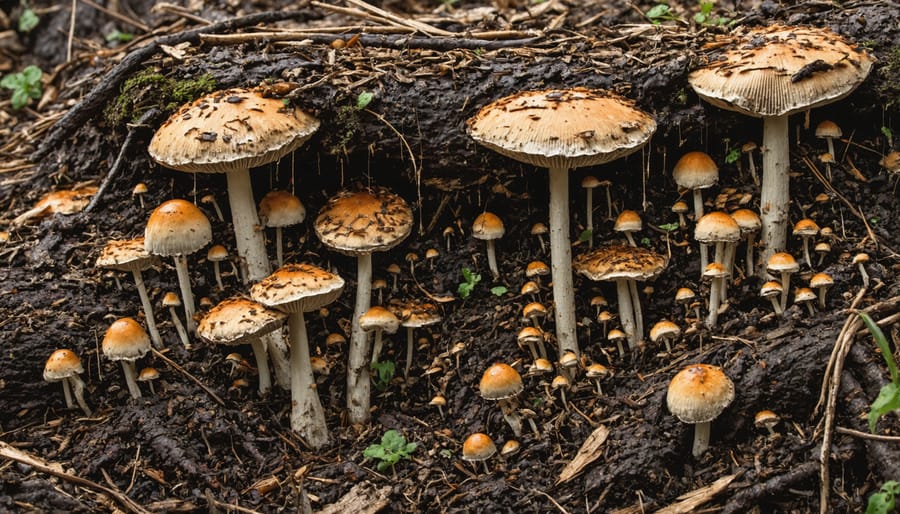
Disease Development
In our humid Canadian climate, particularly during wet spring and fall seasons, mulch can create conditions that promote fungal and bacterial growth. When moisture gets trapped between thick mulch layers and plant stems, it creates an ideal environment for pathogens that can harm your crops. Common issues we’ve observed in Alberta include crown rot in perennials and root diseases in vegetable crops when mulch is piled too close to plant bases.
To minimize disease risks, maintain a 5-10 cm gap between mulch and plant stems, and avoid applying mulch during periods of heavy rainfall. Consider using chunky organic materials like wood chips or straw that allow better air circulation. Some farmers in our region have found success by reducing mulch depth to 5-7 cm during wetter seasons and monitoring soil moisture levels regularly.
Remember that while disease management requires extra attention with mulch, the benefits often outweigh this challenge when proper precautions are taken. Working with local agricultural extension services can help develop site-specific strategies for your farm.
Cost and Labor Implications
While mulching offers numerous benefits, it’s important to consider the financial implications for Canadian farming operations. Initial mulch material costs can range from $5 to $15 per cubic metre for organic materials like straw or wood chips, while specialized biodegradable materials may cost significantly more, reaching up to $30 per cubic metre.
Labour requirements present another significant consideration. According to recent studies from the University of Alberta, applying mulch typically requires 2-3 worker-hours per hectare, with additional time needed for maintenance and replacement. For a mid-sized Alberta farm of 400 hectares, this could translate to 800-1,200 labour hours per season dedicated to mulch management.
Transportation costs also impact the bottom line, particularly in remote areas of Canada where delivery charges can add $50-100 per load. Storage facilities may need to be constructed or modified to keep organic mulch materials dry and prevent decomposition before use, representing another capital investment.
Equipment considerations include specialized mulch spreaders, which can cost between $5,000 and $15,000, plus maintenance expenses. While some farmers report success with modified existing equipment, this approach may reduce efficiency and increase labour requirements.
Many Alberta farmers have found that implementing a comprehensive mulching program requires a 15-20% increase in their annual soil management budget during the first two years. However, these costs often decrease over time as systems become established and more efficient practices are developed. Some farmers offset expenses by producing their own mulch materials or participating in community resource-sharing programs.
Temperature Management Issues
While mulch offers many benefits, its impact on soil temperature can sometimes create challenges for Canadian farmers. In Alberta’s variable climate, mulch can act as an insulator that prevents soil from warming up quickly enough in spring, potentially delaying planting dates by up to two weeks in some regions.
During early growing seasons, dark-coloured mulches like wood chips or straw can actually keep soil temperatures too cool, especially in areas where early-season warmth is crucial for crop establishment. This effect is particularly noticeable in northern Alberta, where farmers have reported slower emergence rates in mulched fields compared to bare soil.
Conversely, during intense summer heat waves, certain types of mulch can trap too much heat near the soil surface, potentially stressing plant roots and accelerating moisture loss. This is especially problematic with plastic mulches, which can raise soil temperatures by up to 5°C more than organic alternatives.
Temperature management becomes more challenging in shoulder seasons, when dramatic day-night temperature fluctuations are common. While mulch helps moderate these swings, it can sometimes maintain temperatures outside the optimal range for specific crops.
To address these challenges, many Alberta farmers now practice selective mulching, applying materials strategically based on seasonal timing and crop requirements. Some opt for lighter-coloured mulches in summer and darker materials in cooler months, while others adjust mulch thickness throughout the growing season to better manage soil temperature.
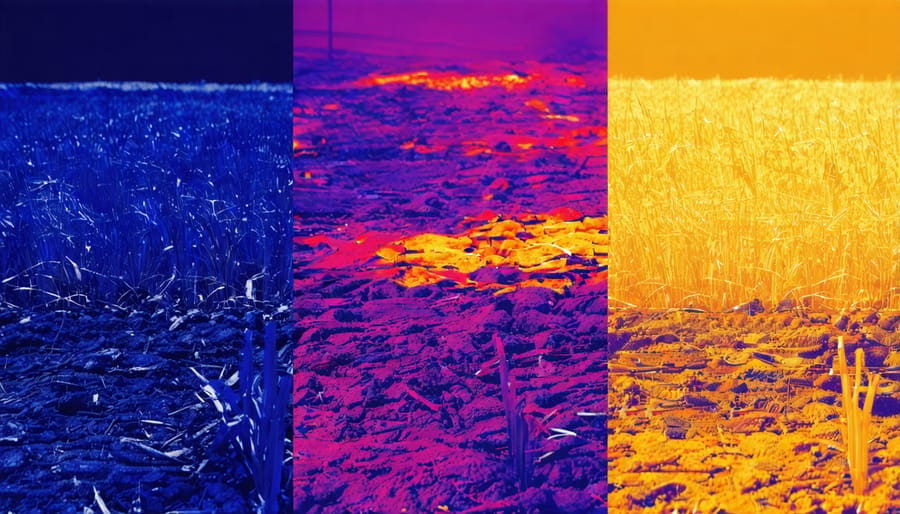
Practical Solutions
While mulching presents challenges, Alberta farmers have developed effective solutions through years of experience. For cost concerns, consider partnering with neighbouring farms to share equipment and bulk-purchase materials, or explore municipal programs that offer free wood chip mulch. Many successful operations also integrate cover crops as living mulch to reduce material costs.
To address decomposition issues, timing is crucial. Apply organic mulch in early spring when soil temperatures begin to warm, allowing for optimal decomposition rates. Monitor soil temperature regularly and adjust mulch depth accordingly – typically 5-7 cm for organic materials in our climate. For areas prone to slower decomposition, incorporate nitrogen-rich materials like alfalfa or grass clippings into your mulch mix.
Combat pest problems by maintaining appropriate mulch depth and keeping it at least 10 cm away from plant stems. Installing physical barriers like copper strips can deter slugs, while introducing beneficial nematodes helps control harmful insects. Regular monitoring and prompt removal of any infected mulch prevents disease spread.
For nutrient tie-up concerns, pre-composting woody materials before application significantly reduces nitrogen competition. Alternatively, supplement with a light application of nitrogen fertilizer (roughly 2-3 kg per 100 square metres) when applying fresh wood-based mulch.
To minimize soil temperature fluctuations, gradually transition to mulched systems by starting with smaller areas and lighter applications. This allows soil ecosystems to adapt while maintaining consistent temperatures. Using reflective mulch materials during extreme heat periods can help regulate soil temperature.
While mulching presents certain challenges, it remains a valuable practice for Canadian farmers when implemented thoughtfully. The key is understanding and preparing for potential issues like increased pest activity, nutrient tie-up, moisture management, cost considerations, and timing constraints. By approaching mulching with proper planning and regular monitoring, farmers across Alberta and beyond can effectively minimize these drawbacks while maximizing the benefits of soil protection and moisture retention. Remember, successful mulching often requires adapting techniques to your specific soil conditions and crop requirements. Consider starting with smaller test areas and consulting with local agricultural extension services to develop a mulching strategy that works best for your operation. With careful management, the advantages of mulching typically outweigh the disadvantages, contributing to long-term soil health and sustainable farming practices.

